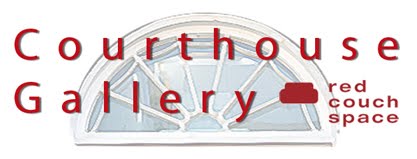Collages by Machteld
van Buren (The Netherlands)
From Saturday 12 January – 1 February
2013
Official opening 12th January
4 pm - Reading and book launch
5 pm - Launch of the exhibition
Closing reception with artist talk and
panel discussion: 1 February at 7pm
The theme of the panel discussion is:
Questioning Europe’s Future
The series of works titled ‘Circus Europe’ are created by Machteld van Buren in 2012. The eight large collages illustrate how the struggle for survival is being waged in various European countries.
Eight poets were invited to offer their interpretation of these images. The Irish poets taking part in this project are Jo Slade, Frank Golden, Jessie Lendennie and Patrick Chapman.
The Dutch poets are Arnoud van Adrichem, Martin Reints, Lieke Marsman and Peter van Lier.
Publisher Salmon Poetry, based in Co Clare, will publish a
booklet of this project in an English edition. The collages are to be exhibited
in both Ireland and the Netherlands.
Machteld
van Buren is an established artist and her work is in the collections of the
Stedelijk Museum in Amsterdam, the Centraal Museum in Utrecht and the Fries Museum
in Leeuwarden. (http://www.machteldvanburen.nl/)
In this
project she reflects on the tensions and uncertainties that exist in the
present-day European Union which, although it is presented under the banner of
a common flag, has always been a patchwork of independent nations. The current
crisis has made it clear that a ‘United States of Europe’ is still a long way
off. In the future, further disintegration is perhaps a more likely prospect
than political union.
 The
collages explore how the struggle for survival is being waged in various
European countries. Most of the countries are depicted as an animal: the body
consists of a map onto which the realistic head of an animal has been
superimposed. Great Britain is portrayed with a number of horses’ heads, which
form part of the landscape. The awkward juxtaposition of these figures suggests
that the UK is not only struggling with its position within the EU, but is also
divided by internal strife. Germany appears to be a bird of prey – not the
traditional eagle, but a vulture. The juggling acts which these circus animals
have to perform to keep themselves going are indicative of how each nation
functions. But just how the stunts work is not entirely clear.
The
collages explore how the struggle for survival is being waged in various
European countries. Most of the countries are depicted as an animal: the body
consists of a map onto which the realistic head of an animal has been
superimposed. Great Britain is portrayed with a number of horses’ heads, which
form part of the landscape. The awkward juxtaposition of these figures suggests
that the UK is not only struggling with its position within the EU, but is also
divided by internal strife. Germany appears to be a bird of prey – not the
traditional eagle, but a vulture. The juggling acts which these circus animals
have to perform to keep themselves going are indicative of how each nation
functions. But just how the stunts work is not entirely clear.
Rather
than leaving it to politicians to define the Europe of today and tomorrow, it
would be good to have artists depict it as well. Given the tone of the debate,
alternatives with a playful or visionary element might actually be quite
useful.
So let
the fun begin: ‘Ladies and Gentlemen, welcome to Circus Europe!’



No comments:
Post a Comment